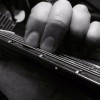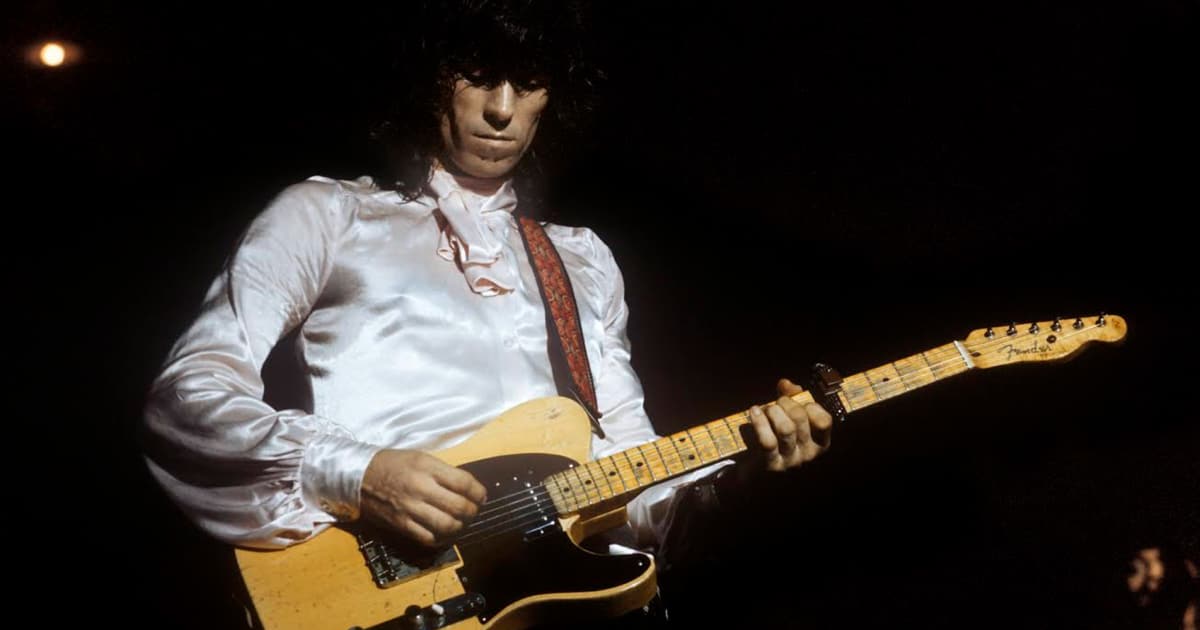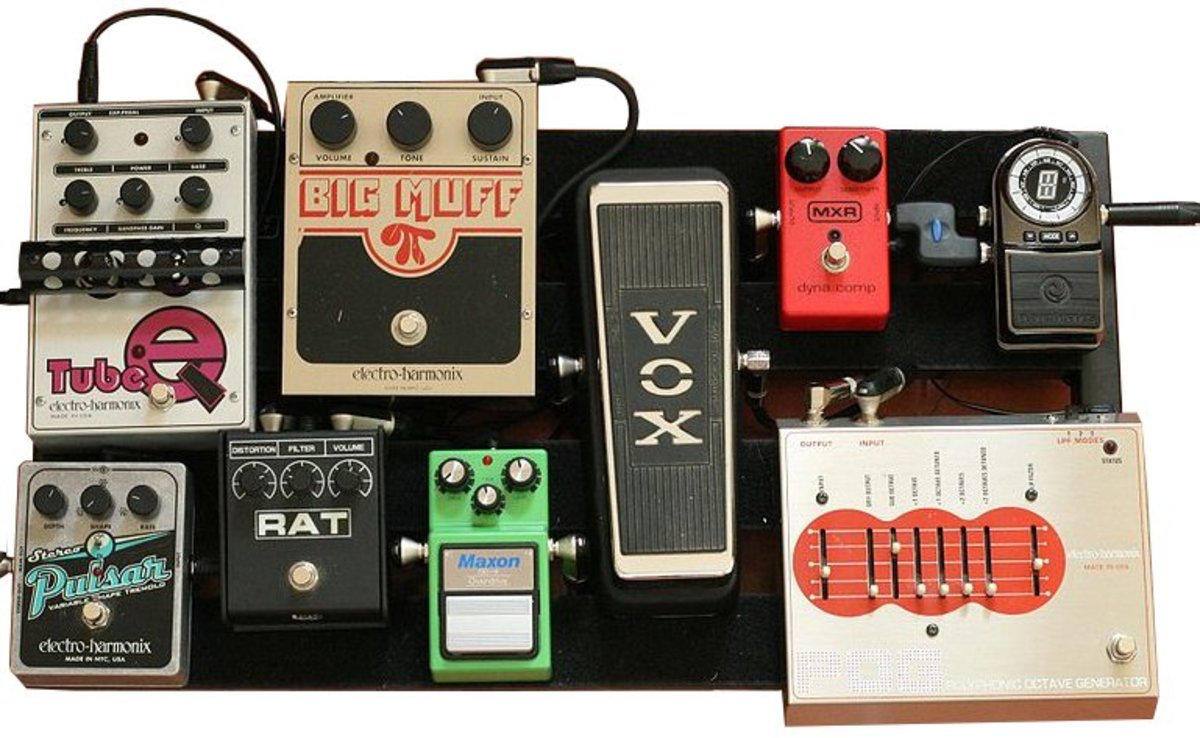10 Insanely Easy Ways Make Learning Guitar More Comfortable
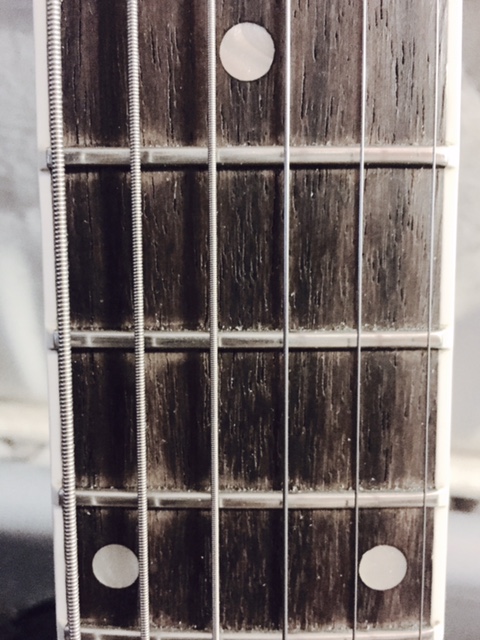
There are many people who want to learn to play the guitar. Everyone has their own reasons, and their own ways of making that last decision to actually pick one up and see where it takes them. The road from this first step to the more advanced steps in guitar technique may look long from a beginner's perspective, but these 10 preparations could make a difference.
1. Make Sure You Have a Metronome
Whether it's a phone app, built into a pedal, or some other type of device, a metronome is vital to the start of grasping what it is to play guitar well. Not only does it train you to stay on beat, it can give you direction when you're not sure where to go next, or what you can do to improve. Increasing and decreasing the speed can both have positive effects on what you're practicing, because you are learning the motion thoroughly. On top of all of this, a metronome can be just the little kick your imagination needs to any riffs that may spontaneously bust out after the scale you just practiced.
2. Read Up
One of the best ways to see what you're getting into is to watch videos about learning guitar (or read hubs like these!). You may begin to understand the many different approaches you can take, and how different lessons can impact your technique development. These range from short and modern self-taught tricks, to classical music theory-based courses.
The video above is very informative and doesn't take much time at all to watch. Posted a few years ago by Youtuber Axe of Creation, it packs some basic important knowledge into a video under 10 minutes long. His other videos are of the same quality, and I suggest any skill level of guitarist to browse through his uploads at least once.
3. Develop a Routine
Some beginners tend to wonder how many hours of practice per day or week they should be putting into practicing. While time is definitely needed, in the long run, it matters more whether or not you are actually improving as you practice.
A good way to balance out what you're learning is by combining what you want to learn (a technique you intended on learning beforehand, or it could be something that is just easier for you to practice than other things), with what you need to learn. By putting in something that you would *like* to learn, you are giving yourself incentive to practice in the first place. Even if it's only for 5 minutes, some practice is better than no practice.
How are you going to develop a routine? Well, for starters, there are plenty of resources and routines from other people online. However, to make it that much more interesting, you can mix things up by planning one yourself.
Here's an example:
5 minutes practicing any pentatonic scale
30 minutes practicing known chords
30 minutes learning new chords
5 minutes practicing any Mixolydian scale
10 minutes to play whatever you want
10 minutes practicing switching between chords (both new and old)
5 minutes practicing any Mixolydian scale
20 minutes learning whatever song or technique you want
5 minutes practicing any pentatonic scale
Two hours of practice already planned out, simple as that. It doesn't have to be that amount of time, you can shorten or lengthen it. You don't even have to be specific on what type of scale to practice, and any other small detail of your routine such as that should be treated the same way. Customize it however you want, as long as you are practicing. The above looks similar to how I was practicing a few months ago (I've since swapped certain parts to fit my learning habits). Just a bit of everything relevant to my music taste - notice how I didn't include any one technique, such as folk finger-picking or flamenco. That is all up to you to decide. Whatever it takes to make the process more fun and keep you hooked on it. Speaking of which, sugar-coating and simplifying the journey tends to be a lot easier when you follow this next bit...
One of Many Book Options

4. Don't Pressure Yourself
Nowadays, the psychological approach to staying consistent with guitar may coincide with some of the advice you've heard about exercise - start out small if you have to, a 5 minute workout is better than no workout, it takes time, etc. While usually easier said than done, most of these tips are actually true for guitar. Don't force yourself to know an entire song in one day if you've just started playing. You will become frustrated and more susceptible to quitting. If you don't like the idea that you're about to practice for 30 minutes, maybe just practice for 5. You're not going to shred immediately unless you're insanely gifted by nature. Most of us are not that naturally gifted, and that is fine. Embrace it. Take your time learning.
There are many techniques that even the quickest guitar players can't play correctly, just because they didn't take their time and fully learn the motions. I have been playing for nearly 10 years and my alternate picking to different strings is still sloppy. Just go slow and have patience, it will pay off before you even realize it.
5. Write Your Own Songs
Remember when I said not to expect shredding abilities within your first attempt at playing guitar? That doesn't mean you can't be original and create something!
The goal here is to learn something, just one thing, and then use it on different areas of the fret board to create something original that belongs to you. It can be the most generic sounding thing ever but it will still be yours, and may further inspire you to keep writing as you learn.
Let's say you just learned an E minor and an A minor chord. Assuming you are following other aspects of this hub and using a metronome, take a second to find a speed that's comfortable for you. Then piece together a song structure, i.e intro with chords and verses with single-string notes from the same chords. It can be as short or as long as you want. The idea here is to inspire you to continue practicing your instrument, and to emphasize that less-skilled players can still write their own songs. Sometimes, this early simplicity helps artists to create catchy songs that become insanely popular. You can still be creative even if you're not the best.
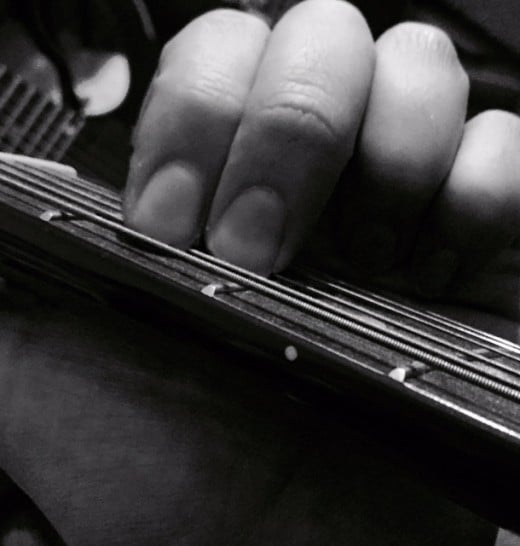
6. Reach Out
Do you know other guitar players? Have any friends that are also learning guitar? Another fun and potentially useful thing for you to learn is how to synchronize with another person. If a session goes particularly well, it could be good improvisation practice for you both.
If you know people who are better than you, as well as others who are still learning, try to jam with both kinds at least once. Don't let the better guitar player's skills intimidate you, for you can easily get to where he is with enough practice. Try to focus more on what you can learn, and make sure your friends know you are still learning. They may go more into teaching mode than show-off mode (even in show-off mode, you can still learn by observing their hand motions).
You will not hear this step from most people who would tell you ways to learn to play guitar, because it is not among your first priorities. In a way, that's true. It is good to know a few things and have the right mindset with your guitar before you do so. Even if you don't plan to be playing with other people when you achieve guitar mastery, doing so as part of your learning process will help you stay on beat in the future.
7. Crush the Ego
Seems like a circumstantial step to be avoided by those it doesn't apply to, right? Funnily enough, it actually applies to almost every guitar player, even in the slightest ways, from people you'd least expect. Even if you are learning guitar as an extremely low-commitment hobby, you will feel that slight tinge of "they're so much better than me" when you witness far superior playing from another guitarist. That is one of the built-in bad habits guitarists have as they further learn the instrument, and it is a rather freeing feeling to let go of that mindset. There are some pieces written that would just make you want to give up, that's why it's important to learn that everyone starts at a different time, and gets better in their own way - at their own pace. You don't need to be the best. If there is one truly "best" guitarist on this earth, we've probably never heard of him. Or her.
8. Learn Different Ways To Tune
I'm not talking about alternate tunings, I just mean the tuning process itself. Learning basic chords on an out-of-tune guitar will make you think you're messing up, when really you're holding the correct strings the right way - it's just the strings being tuned too sharp or too flat.
The most basic way is to use a tuner. Most entry-level tuners are rather cheap and reasonably accurate. Everyone talks about learning to tune by ear, but for me, by-ear tuning didn't come until I had played enough guitar to know what the notes were supposed to sound like. It's different for everyone.
There are also ways to tune to yourself via certain frets on the guitar, but that is assuming that at least one of your strings is truly in tune and you're tuning the rest to that string. Research the easiest and most accurate way that suits you.
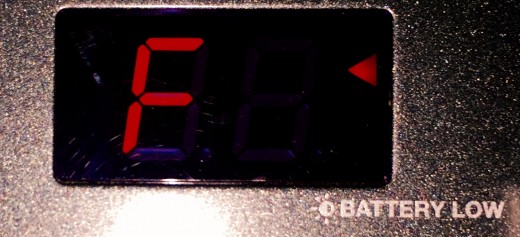
9. Use New Strings
If you can snag a guitar that has been restrung in the past 3 months, you're in luck. Although some would recommend newer players not to use brand new strings immediately, it can have a positive effect when combined with a properly tuned guitar. There should be clarity in each note of every chord you play, and you may notice more of what you're doing right and wrong.
Why might some suggest against brand new strings to learn on? First off, after a guitar has been restrung, the strings will need to be broken in, sort of like a new shoe. It will be stiff at first and will require slightly more tuning than usual, which can make a beginner nervous they're not tuning properly. However, as the strings start to smooth out and hold a note better, it will create a feeling of ease and reward for sticking with learning during tension and compromised tuning. As an added bonus, if you restring it yourself, you will know more about how your strings affect your sound - as well as how good of a job you did restringing it!
10. Practice Standing Up and Sitting Down
Or, for that matter, practice in just about any angle that still gives you access to the strings. If you're able to play the same progression perfectly, at the same speed, in any position you're in - you will play it smoother and with less effort when you play it normally. No one hears this simple, small tip as much as they should. It's unfortunate, because many seasoned guitarists actually have this ability and it seems to greatly affect how much effort their hands put into more difficult techniques at higher speeds.
WARNING: If the position you're in is hurting your hands, you should probably pick a different one.
Some of these may seem unusual for beginner advice, but these are some things that more advanced guitarists have wished they'd done from the start, and it can be a shortcut to playing better. However, I encourage everyone to learn exactly how they want to, so if none of these appeal to you, move on!
